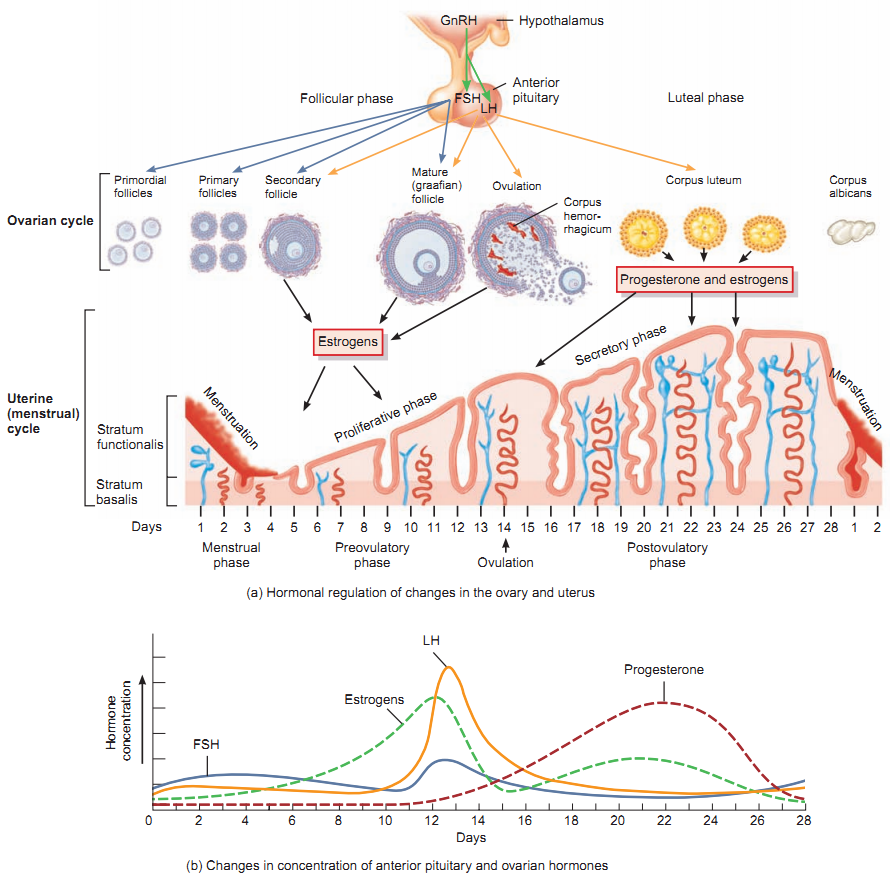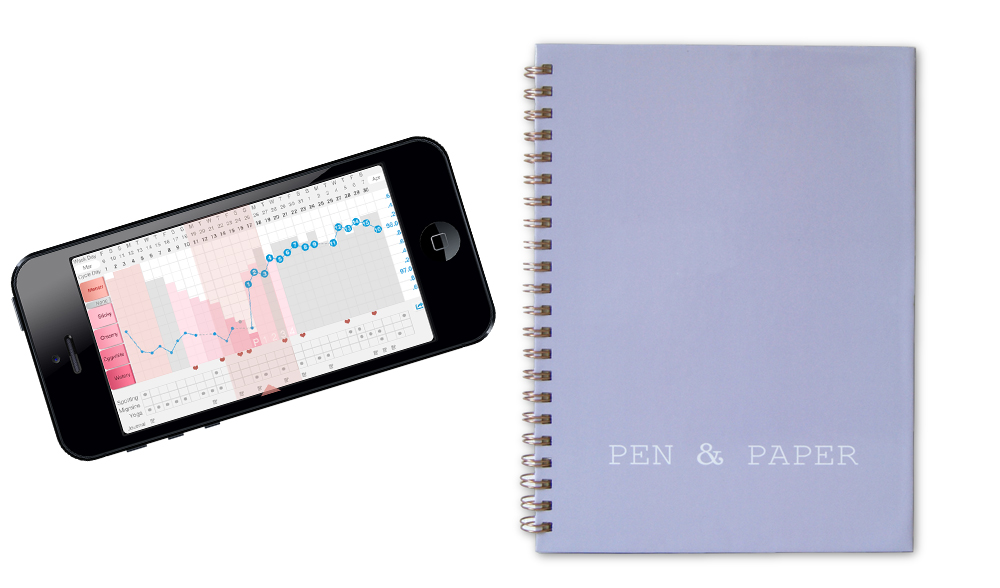
This week has been quite a momentous one in the world of Fertility Awareness Based Methods (FABM’s), with the release of a large systematic review that comprehensively critiques the quality of a huge number of FABM studies. This is significant considering the fact that reliably high efficacy rates are often the main drawcard for women who are considering using a specific FABM. Additionally, these efficacy rates are often central messages contained in the marketing of Fertility Awareness Educators for their current and prospective clients.
The systematic review was published this Thursday in Obstetrics & Gynecology. You can read it HERE. The review, titled Effectiveness of Fertility Awareness-Based Methods for Pregnancy Prevention: A Systematic Review, took on the gargantuan task of evaluating the quality of, and efficacy rates quoted in, a total of 53 studies. These 53 studies span a wide range of FABM’s including Calendar, Cervical Mucus-only, Temperature-only, Hormonal, Symptohormonal, Symptothermal Single-Check and Symptothermal Double Check.
The researchers focused their review on prospective studies only; that is, they excluded all population-based surveys from their analysis. Well-constructed population-based surveys are generally known to provide a more accurate estimation of real-world pregnancy rates; however, they require very large sample sizes to arrive at statistically valid conclusions. Unfortunately, in the case of FABM’s, low national and global use rates (in comparison to other modern contraceptive methods), mean that many FABM’s have to be lumped together to provide a statistically valid overall pregnancy rate – and this overall pregnancy rate obscures the individual effectiveness rate for each FABM. This is currently most apparent with the effectiveness rates that are quoted on the CDC’s website HERE – in fact, the organisation FACTS (an association dedicated to educating medical professionals on the validity of FABM’s as contraception), currently has a petition live HERE calling on the CDC to report more accurately on individual FABM rates.
In contrast to population-based surveys, prospective studies are better suited to delivering perfect-use or method-use efficacy rates – and it was these prospective studies on a multitude of FABM’s that were the subject of the systematic review.
Considering most readers will be users of the Symptothermal Method, I have attempted to summarise the outcomes of the review’s analysis of the Sensiplan method studies – the main one being a study titled “The Effectiveness Of A Fertility Awareness-Based Method To Avoid Pregnancy In Relation To A Couple’s Sexual Behaviour During The Fertile Time: A Prospective Longitudinal Study” by Frank-Herrmann et al in 2007 (otherwise known as the Sensiplan study). You can find the Sensiplan study HERE. The Sensiplan study is what most people reference when they say that the Symptothermal Method has a perfect-use efficacy rate of 99.6% and a typical-use efficacy rate of 98.2%.
The systematic review only covered methods that were connected to a prospective study. It did not look at efficacy rates for Rhythm, DOT App, Creighton, Daysy, Ladycomp, Babycomp, Sophia, TCOYF, Couple To Couple League, Justisse, Symptotherm (and more). This is because these methods either:
- Have not been prospectively studied
- Have been prospectively studied, but the study was of “Low” quality.
A huge majority of self-taught Symptothermal Method users follow the protocol outlined in Toni Weschler’s book ‘Taking Charge Of Your Fertility”; however, Toni’s method is not linked to any prospective studies. TCOYF also lacks a double-check calculation-based rule to open the fertile window (users that are familiar with the TCOYF method will know that the fertile window opens with the first observation of cervical fluid). This means that it is likely to be less effective than Sensiplan, which is classed as a Symptothermal Double-Check method due to the inclusion of a calculation-based rule to double-check the onset of the fertile time in the pre-ovulatory phase.
In saying this, I will never stop recommending Toni’s book due to the incredible wealth of information contained within its pages – in fact, I have 3 copies, all but one of which are currently borrowed out to friends! However, I do think it’s important that women are aware that there are more conservative Symptothermal Methods available (such as Sensiplan), that are linked to prospective studies.
The systematic review identified a total of 53 prospective studies that collected information on pregnancy intentions and outcomes for at least 50 or more participants. They assessed these studies against a 13-section Quality Criteria Framework, designed specifically for this systematic review. Out of the 53 prospective studies, a total of 32 were ranked of low quality, 21 of moderate quality and 0 of high quality.
The Sensiplan study was deemed to be of “Moderate” quality by the team of researchers, and received a score of 7 out of 13 in terms of quality. The mean quality-indicator score of all 53 studies was 5.46.
Let’s break down the reasons why it wasn’t ranked as “High” quality.
- Inclusion/Exclusion Criteria
Sensiplan loses points by not specifying the total number of women who were invited to participate in the study. So we don’t know how many women declined to participate. This could raise concerns of selection bias – you probably wouldn’t want to participate in the study if you had had a bad experience with the method. - Exclusion of population not at meaningful risk of pregnancy
Sensiplan included 2,625 cycles where no intercourse had been recorded, when they calculated the efficacy rates. This would likely skew efficacy rates upward. It’s unclear how major the impact of this might be. - Women in different states of fertility
Sensiplan loses points because they included some breastfeeding women, and some women between the ages of 40-45. It’s reasonable to assume that fertility *may* have been lower in these women, and Sensiplan does not provide a sub-group analysis of separate efficacy rates for these women. - Teaching of method
Sensiplan loses points because they don’t provide details on how their teachers are trained and certified, and what kind of teaching materials were actually used. Although they outline the number of encounters and reference the curriculum that is used, the teaching method would not be easily replicable simply from reading the study. - Statistical methods
Sensiplan loses points here because although they provided a life-table analysis in their study, they did not exclude cycles where no intercourse occurred. This means that the efficacy rates might be skewed upward (as already stated in Point 2 above). Life Tables are preferable to the Pearl Index system, because they provide contraceptive efficacy rates for each month of the study, thereby showing how efficacy rates change over duration of use. - Attrition of participants
Sensiplan reported that 6.7% of participants dropped out of the study after 13 cycles and they even reported the reasons why; however, they lose points for not discussing the demographic differences of the women who left the study.
The overall conclusion is that the Sensiplan study is intensive and “methodologically strong, but may have resulted in a highly select group of users, which should be considered with respect to generalizability of the findings.”
You may be wondering what these results mean for you as a real-life user of the Symptothermal Method! I am not a scientist so I can’t say for sure; however, I have compiled the following points which are my own personal takeaways on the issues raised regarding the Symptothermal Method:
- There are no efficacy rates available for TCOYF users.
- Marquette and Sensiplan are the most effective FABM’s according to current research; however, variability across the studied populations means that it is really not possible to make comparisons across methods.
- Sensiplan is the most effective Symptothermal Method.
- Sensiplan efficacy rates may have limited generalizability among different population demographics (differences in age, education, occupation, marital status, religion, no. of previous pregnancies, your family planning intentions, and variability of your cycle lengths).
- Sensiplan efficacy rates may be skewed upward due to inclusion of cycles that did not involve intercourse.
- There are no efficacy rates currently available for self-taught Symptothermal Method users.
As with any contraceptive method, it’s important that you assess the risks and benefits for yourself, to make an informed decision as to whether the method will be an appropriate fit for you. You may even want to take a look at the socio-demographic characteristics of the Sensiplan study participants – if you feel you differ substantially from the women who were studied, you may want to consider that the efficacy rates might not be generalizable to your own personal situation.
It will be interesting to see whether Sensiplan deliver an official response to the systematic review, as it would be useful to know just how dramatically the exclusion of cycles with no intercourse might affect the actual efficacy rates. However, I am also curious as to whether it is standard for contraceptive efficacy studies to exclude all cycles where intercourse did not occur, when calculating efficacy rates. For example, for studies of the copper IUD where ovulation still occurs, do researchers collect data on exact dates of intercourse so that they can exclude cycles where no intercourse occurred when calculating efficacy rates? Or is this standard relevant to FABM studies only?
I also am curious to know how efficacy rates for other modern contraceptive methods such as the Pill, IUD, Patch, Depo and Ring would stack up against the 13-Section Quality Criteria framework of this review. I suspect that most of these studies are likely of higher quality as they are more modern and funded by large pharmaceutical companies. For me, this raises the question of who is going to fund more high-quality studies on FABM’s? The only people set to financially benefit from more rigorous/high quality FABM studies would be Fertility Awareness Educators, most of whom work for fees that render their services largely voluntary, anyway. I would assume that FABM’s are really not on a level playing field when it comes to competing with studies paid for by manufacturers of medical devices and synthetic hormones!
At the end of the day, all of these questions are better suited to qualified researchers and public health professionals who are familiar with the field. We will have to wait to find out more. For FABM’s to be taken seriously by the medical community and general public, we absolutely require studies that inspire confidence and trust. In the words of the systematic review:
“Fertility awareness-based methods will continue to be relevant and important for many people for a variety of reasons; obtaining the best possible data, and documenting use in varying populations, is critical.”
My genuine hope is that this systematic review will place Fertility Awareness Based Methods firmly in the spotlight and with any luck, be the catalyst for the introduction of some high-quality studies into the field of FABM contraceptive efficacy estimation.
Do you have any thoughts on the systematic review? Have you read it? Please feel free to comment below with your initial thoughts, comments and concerns.
This is my personal summarisation of what I believe were the key points regarding the Symptothermal Method. Please take the time to read the review for yourself and form your own opinion.





















